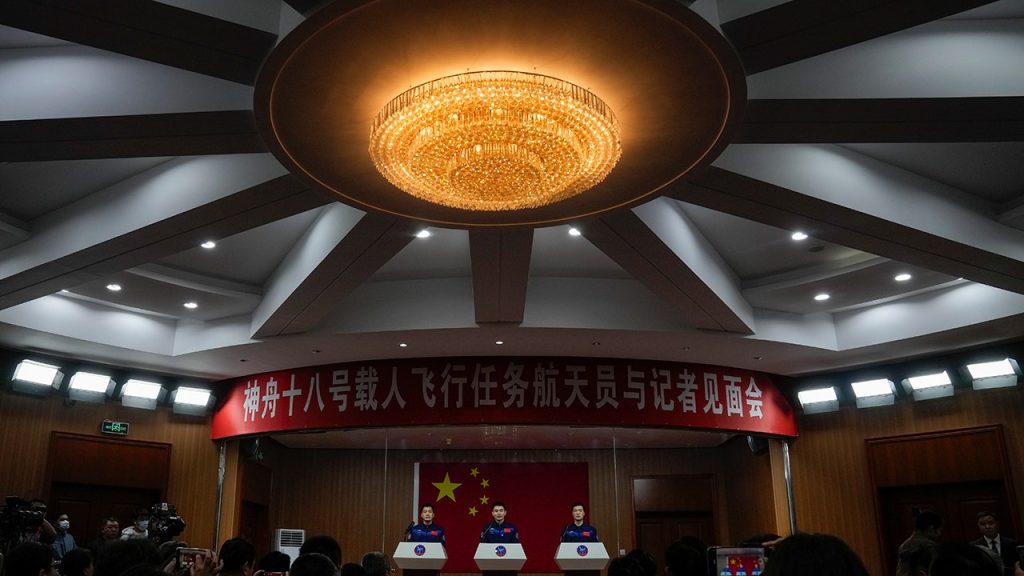China’s space agency is preparing to send a new crew to its space station as part of its goal to put people on the moon by 2030. The three-member crew of the Shenzhou-18 spacecraft will replace the current team who have been manning China’s Tiangong space station since last October. The station was built by China after being excluded from the International Space Station due to concerns over the involvement of the Chinese military. This year, the station is scheduled for two cargo spacecraft missions and two manned spaceflight missions.
The crew of Shenzhou-18 includes Commander Ye Guangfu, a veteran astronaut, and astronauts Li Cong and Li Guangsu, who will be going to space for the first time. They will spend about six months on the space station, conducting scientific tests, installing space debris protection equipment, carrying out payload experiments, and promoting science education. China is also working towards allowing foreign astronauts and space tourists to visit its space station in the future. The crew is set for lift-off from the Jiuquan Satellite Launch Center in China’s northwest.
China conducted its first manned space mission in 2003, becoming the third country after the former Soviet Union and the U.S. to put a person into space using its own resources. While the U.S. space program is believed to still hold an advantage over China in terms of spending, supply chains, and capabilities, China has made significant advancements in space exploration. They have brought back samples from the lunar surface for the first time in decades and landed a rover on the far side of the moon. The U.S. aims to put a crew back on the lunar surface by the end of 2025 with the help of private sector players such as SpaceX and Blue Origin.
Currently, only four countries – the U.S., Russia, China, and India – have landed spacecraft on the moon. China is forging ahead with its ambitious space program, with plans to put people on the moon by 2030. The crew of Shenzhou-18 is part of this larger goal, as they prepare to spend six months on the Tiangong space station conducting various scientific experiments and missions. China is also looking towards the future, hoping to eventually allow foreign astronauts and space tourists access to its space station.
As China continues to make strides in space exploration, the United States remains a key player with plans of its own to send astronauts back to the moon. With private sector companies like SpaceX and Blue Origin contributing to the efforts, the U.S. is aiming to have a crew on the lunar surface by the end of 2025. Despite the competition, international collaborations in space exploration are also a possibility, as China looks to welcome astronauts from other countries to its space station in the future. The race to the moon continues as countries strive to further their presence in outer space exploration.













